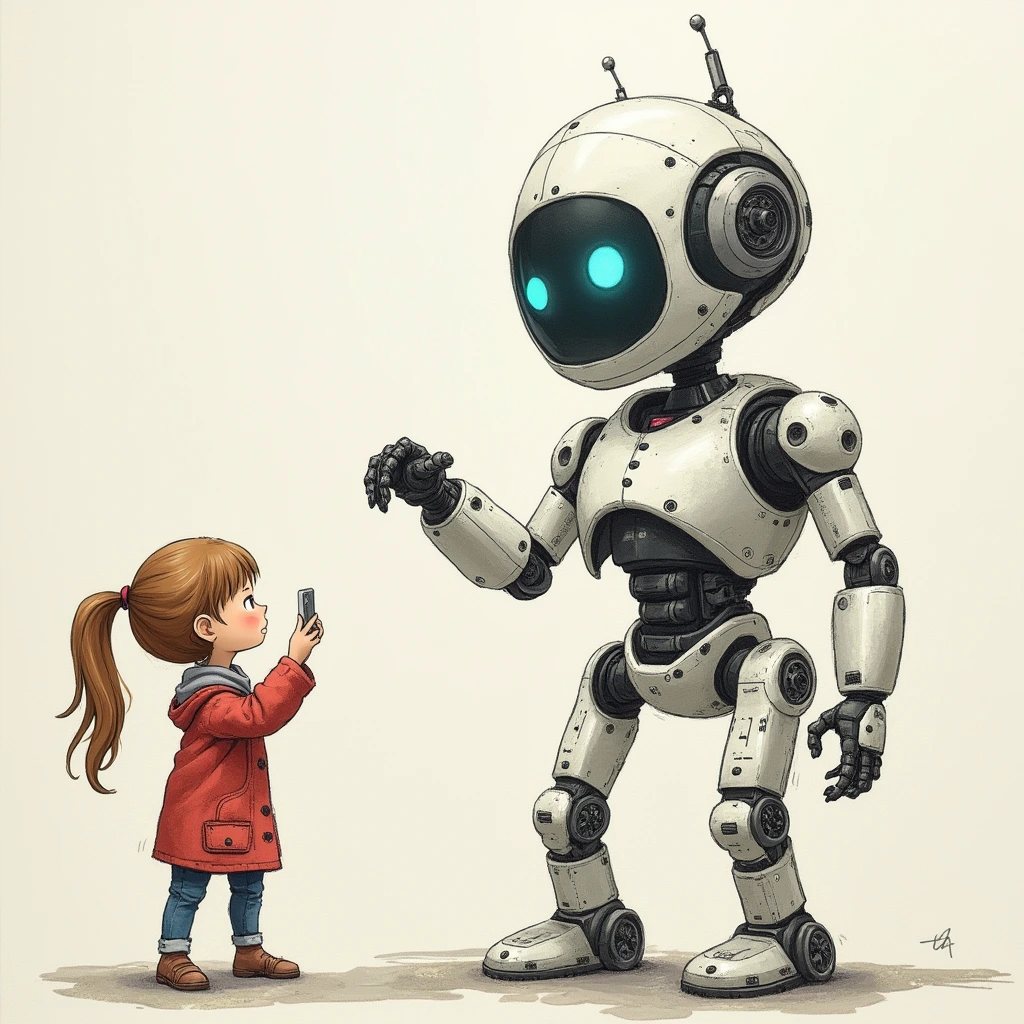AI Agents Explained Like You Are 5
- 1 min read
AI agents are smart computer programs that can do things on their own, like finding information or solving problems. They get better over time by learning from what they do and the feedback they get. They can work together with other programs to do bigger jobs. These agents help make tasks easier and faster, but they need careful supervision to make sure they don't make mistakes or cause problems.

An AI agent is like a smart robot that can do things for you on its own. Imagine you tell it to do something, like find a good time to go surfing, and it figures out the best plan all by itself. It can think, learn, and use different tools to get the job done without needing someone to help all the time. It's like having a helper that gets better over time!
Ok. Now I assume the reader is an adult.
AI agents are autonomous systems or programs designed to perform tasks independently on behalf of a user or another system. They are capable of executing a variety of functions, including decision-making, problem-solving, and interacting with external environments using available tools. These agents can adapt and refine their actions through feedback and learning mechanisms, allowing them to handle complex, multi-step tasks that may require ongoing adjustments based on new information.
AI agents work by leveraging large language models (LLMs) and specialized tools, which allow them to gather data, optimize workflows, and autonomously generate solutions. They can utilize external data sources, APIs, or even collaborate with other AI agents to accomplish complex goals. These agents break tasks into subtasks, adjust their plans as needed, and continuously refine their responses to align with user expectations. This makes them more versatile than traditional non-agentic chatbots, which lack tools, memory, and reasoning capabilities.
The operation of AI agents typically follows three stages:
1. Goal initialization and planning: Setting the agent's goals, determining the available tools, and devising a plan to achieve objectives.
2. Reasoning with available tools: Using external tools to fill gaps in knowledge and inform the agent's decision-making process.
3. Learning and reflection: Incorporating feedback from previous interactions to improve future performance.
There are different types of AI agents based on their complexity, ranging from simple reflex agents to advanced learning agents that can adapt over time. These agents can be used in various industries, including customer service, healthcare, emergency response, and more. They offer significant benefits in terms of task automation, improving efficiency, and enhancing user experiences. However, their complexity also brings challenges, such as ensuring robust oversight and accountability, especially when multiple agents are involved in a task.
Some key use cases of AI agents include:
• Customer experience: AI agents can be integrated into websites and apps to act as virtual assistants, offer mental health support, and more, enhancing user interactions and satisfaction.
• Healthcare: AI agents can assist with tasks like treatment planning, medication management, and patient care, allowing medical professionals to focus on more critical issues.
• Emergency response: AI agents can help identify individuals in need during natural disasters, optimizing rescue efforts through deep learning and social media analysis. While AI agents present vast potential for automation and efficiency, their development and deployment must be carefully managed to prevent issues such as infinite feedback loops, tool failures, or misuse. Best practices for working with AI agents include:
• Activity logs: Keeping detailed logs of agent actions to ensure transparency and help diagnose issues.
• Interruptibility: Ensuring that agents can be interrupted when necessary, especially to avoid harmful consequences from malfunctioning agents.
• Unique agent identifiers: Assigning unique identifiers to agents to improve accountability and prevent malicious use.
As AI agents evolve, they are likely to play a more significant role in various sectors, continuously improving their ability to address complex tasks, interact with users, and adapt to dynamic environments.
Benefits of AI Agents
AI agents are particularly beneficial for automating tasks and improving workflow efficiency, known as intelligent automation. By handling complex tasks that would typically require human intervention, AI agents allow organizations to achieve goals faster, more efficiently, and at a larger scale. Multi-agent frameworks often outperform individual agents because of the diversity in action plans available. A larger set of actions and knowledge, including feedback from other AI agents, enables them to learn and reflect better. These frameworks are powerful because they allow collaboration between agents with different areas of expertise, helping to solve problems faster and more effectively. This collaborative nature of AI agents, along with their ability to address information gaps, marks them as a leap forward in AI technology.
Another advantage of AI agents is their ability to deliver more accurate, tailored responses over time. Traditional AI systems provide responses based on pre-programmed logic, while AI agents evolve by utilizing available resources, exchanging information, and updating their knowledge base. This results in a more dynamic interaction that improves the user experience.
However, there are also risks to consider with multi-agent frameworks. When multiple agents rely on the same foundational models, shared vulnerabilities can arise, potentially leading to systemic failure. Therefore, robust data governance is necessary to avoid failures and mitigate the risk of negative attacks or malfunctions.
Challenges and Risks
AI agents, though powerful, are not without their challenges. One potential issue is when an AI agent lacks the ability to make a detailed plan or reflect on its actions, leading to the creation of infinite feedback loops. This can happen if the agent doesn't recognize when it's repeating actions or when its tools are no longer valid. Real-time human oversight may be needed to prevent these kinds of issues, especially in more complex or sensitive situations. Creating AI agents from scratch is also resource-intensive. Training high-performance agents requires significant computational power and time, especially for tasks that are complex or require specialized knowledge. Depending on the nature of the tasks, AI agents may take several days to complete assignments, further emphasizing the need for careful management.
Best Practices
To minimize the challenges associated with AI agents, several best practices can be followed:
1. Activity Logs: It’s important to maintain transparent activity logs that detail the actions of AI agents. These logs should include information on the external tools used and interactions with other agents. By reviewing these logs, developers can diagnose issues and improve trust in AI systems.
2. Interruptibility: AI agents should be designed with the ability to be interrupted if necessary. This is particularly important in cases where feedback loops, tool access issues, or design flaws could lead to malfunctions. A human operator should be able to step in and halt the agent’s operations, especially in critical scenarios like emergency response or financial transactions.
3. Unique Agent Identifiers: To ensure accountability and reduce the risk of malicious activity, AI agents should have unique identifiers. These identifiers make it easier to trace the origins of the agent’s creators, users, and developers, which is especially crucial if the agents are deployed in environments where they interact with sensitive or critical systems.
4. Human Feedback: Providing occasional feedback to AI agents is essential, especially when they are new to an environment or task. This helps them adjust their responses to better meet expectations. In environments where the stakes are high—like healthcare or finance—human approval may be necessary before agents can take certain actions, such as making decisions or executing critical tasks.
By following these best practices, the development, deployment, and use of AI agents can be optimized, ensuring that they perform at their best and mitigate risks.

Turkish Tech Renaissance: The Remarkable Growth of the IT Industry
Turkey's IT industry is rapidly growing, driven by its strategic geographic location, a young and educated workforce, and strong government support. The country's thriving startup ecosystem, emphasis on digital transformation, and increasing IT exports are positioning Turkey as a significant player in the global technology landscape. This growth trajectory highlights Turkey's potential and ambition in shaping the future of technology both domestically and internationally.

TURKIYE: The Rising Star of IT Outsourcing
Turkey is quickly becoming a key player in the IT outsourcing industry, thanks to its strategic location, skilled workforce, and cost-effective solutions. Positioned between Europe and Asia, Turkey offers businesses access to top-tier IT talent at competitive prices, with minimal language and cultural barriers. The country's commitment to data protection and innovation further enhances its appeal as a reliable and cutting-edge IT outsourcing partner.